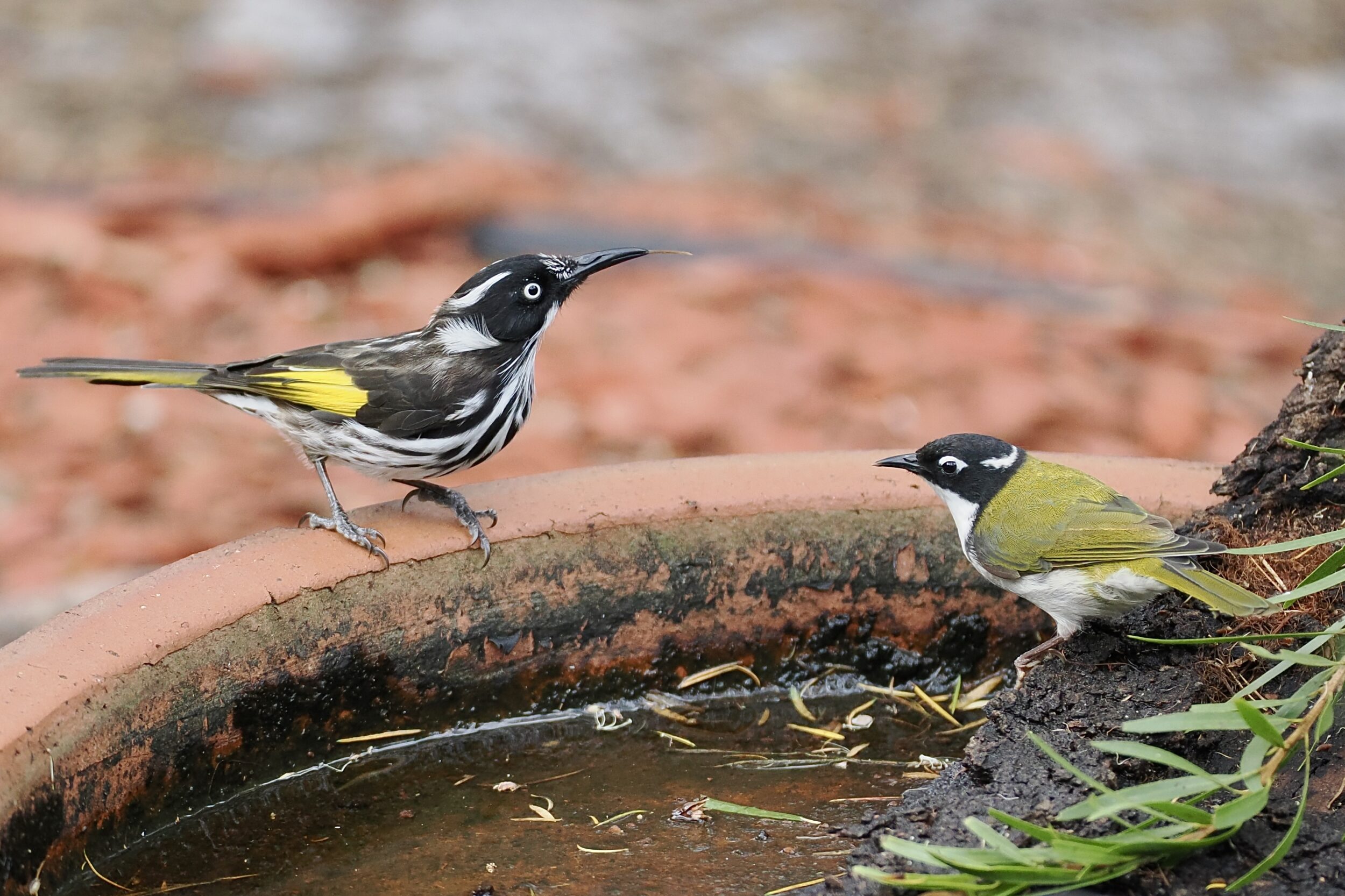At least between the pictured species, “Two honeyeater species, sharing a birdbath” is a perfectly unremarkable, “normal” event.
On the left – sticking out his or her long, “brush-tipped” nectar-collecting tongue – is a New Holland honeyeater, Phylidonyris novaehollandiae.
On the right is a bird that is very clearly a species in its own right, but was not recognised as such until 2010.
It never really was a subspecies of the (eastern Australian) White-naped honeyeater, Melithreptus lunatus.
At last blessed with a single, “proper” common name – and its own “Latin” species name – Gilbert’s honeyeater, Melithreptus chloropsis, lives only in Western Australia’s southwest.
Both pictured honeyeaters are typically loud, “brash” and very busy.
Both species are rather more omnivorous than many people imagine.
Nectar is indeed devoured by both, but they also hunt arachnids, insects and their larvae; a Gilbert’s honeyeater’s diet usually inclines more to “meat” than to “nectar”.
One ought not sneer at visitors to WA who fail to recognise that they are not looking at a White-napped honeyeater,
“T’othersider” and the West Australian really are lookalikes; most of the (big) differences between them are “beneath the hood”, so to speak.
It is not immediately obvious that Gilbert’s honeyeaters are usually a bit longer & bigger.
However, one distinguishing “flag” is unmissable.
A white-napped honeyeater has a red eyepatch; the patch above a Gilbert’s honeyeater’s eye is white.
Discover more here.

Comments